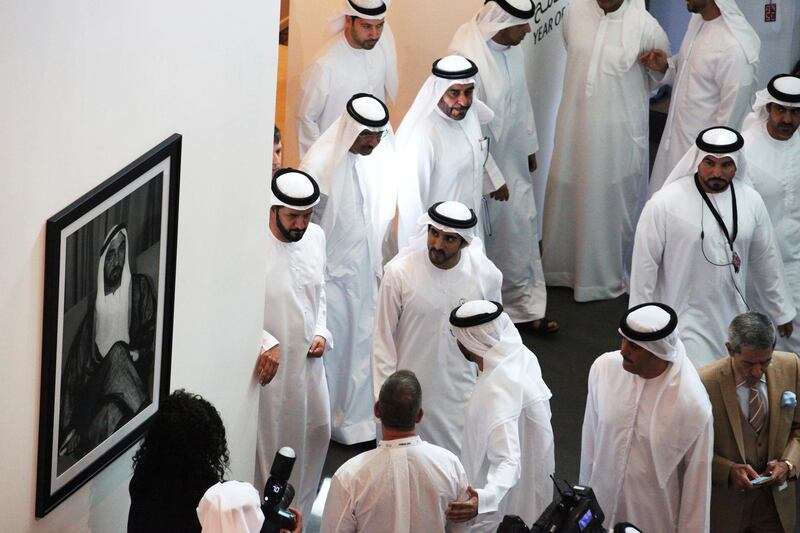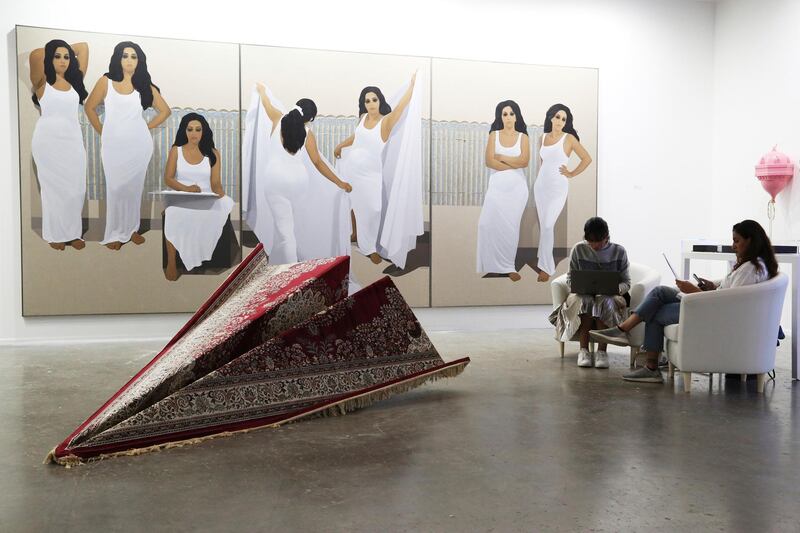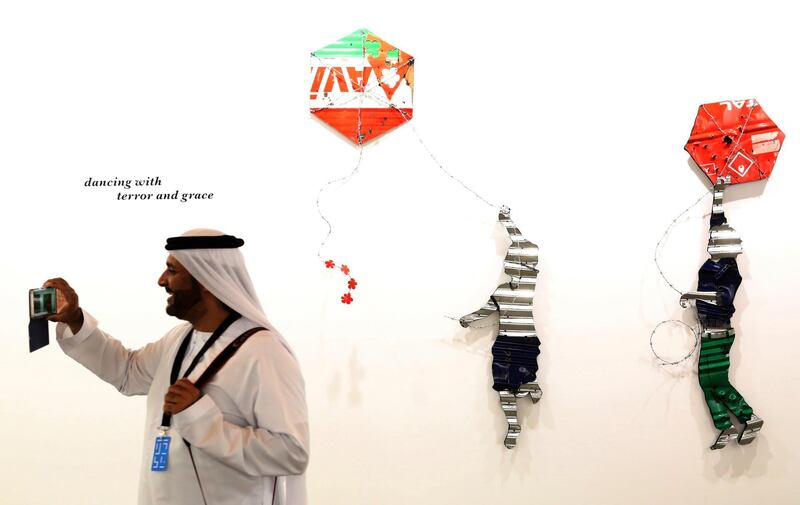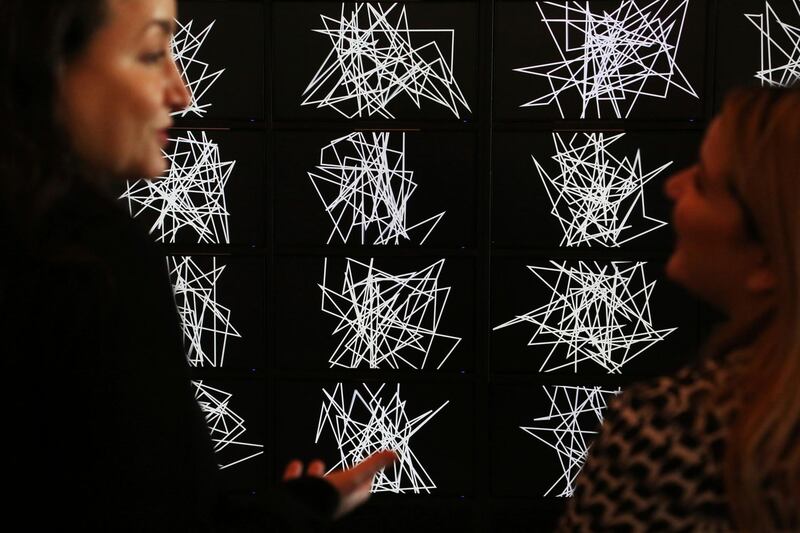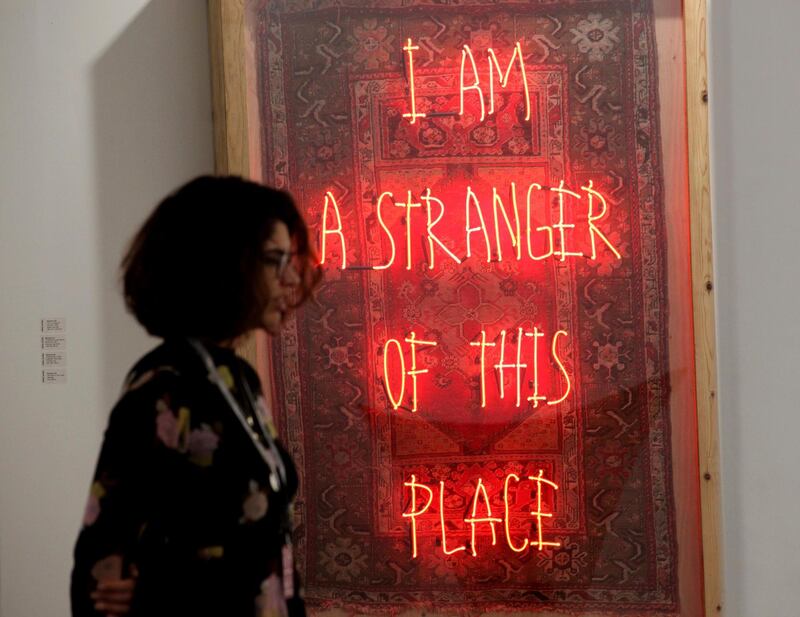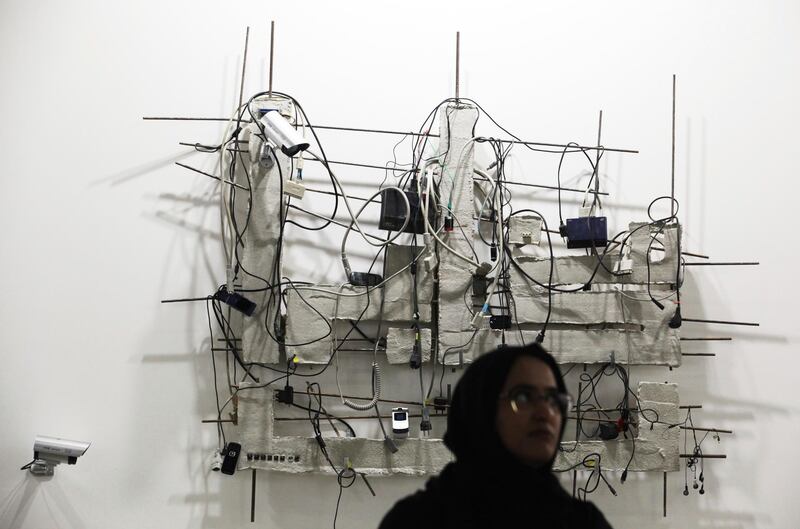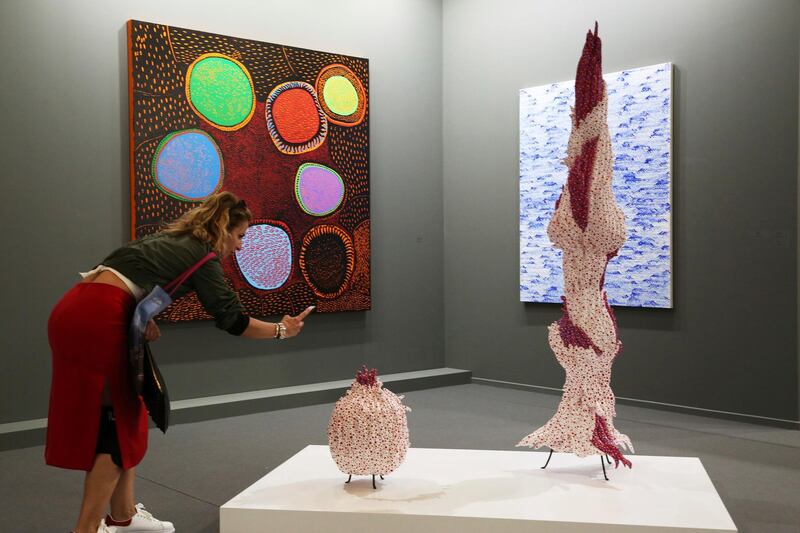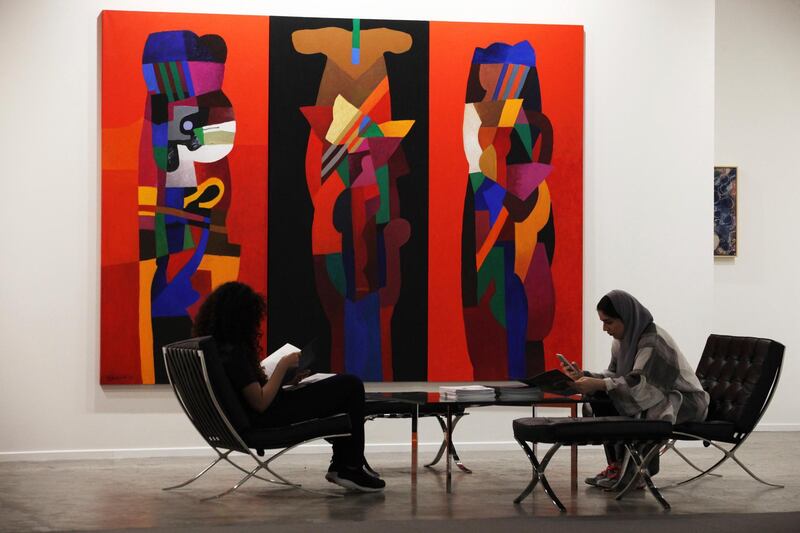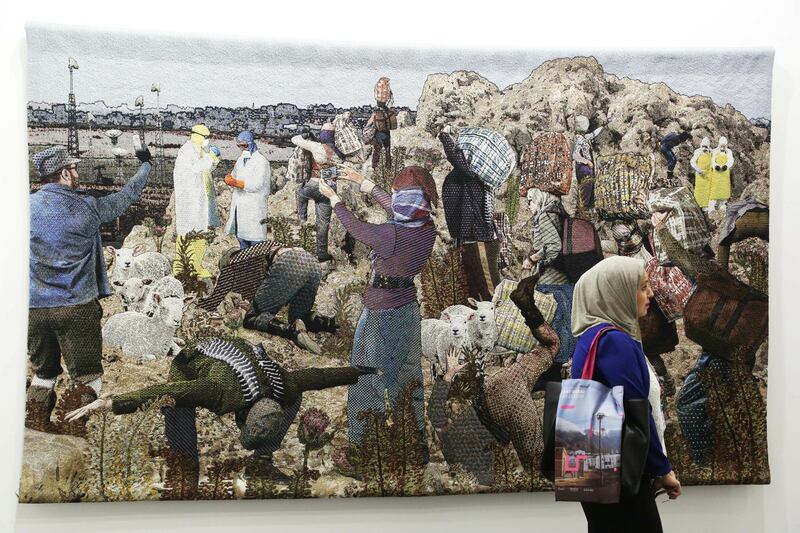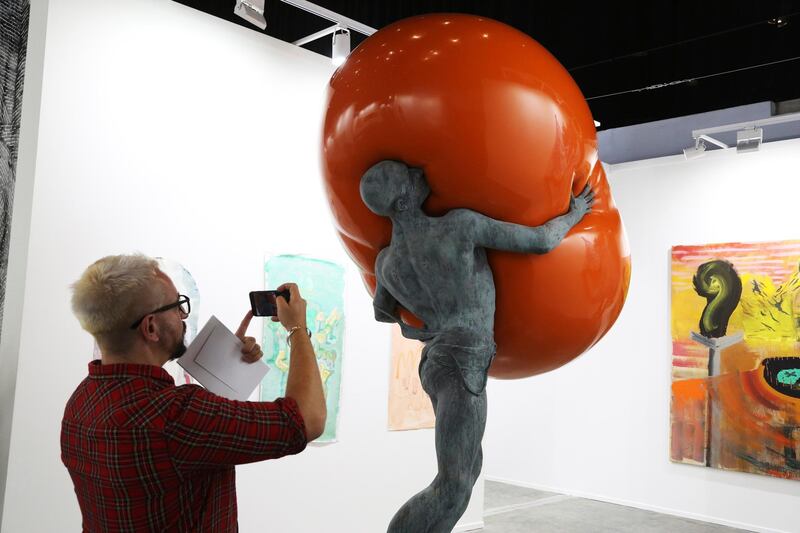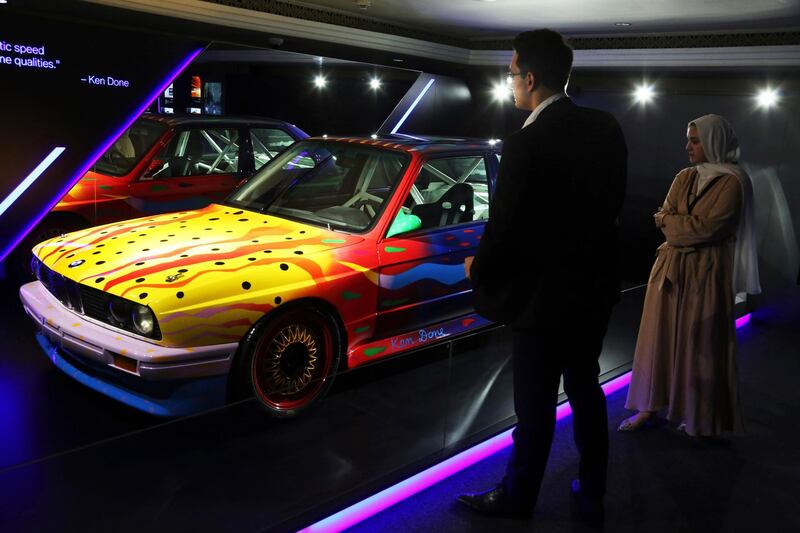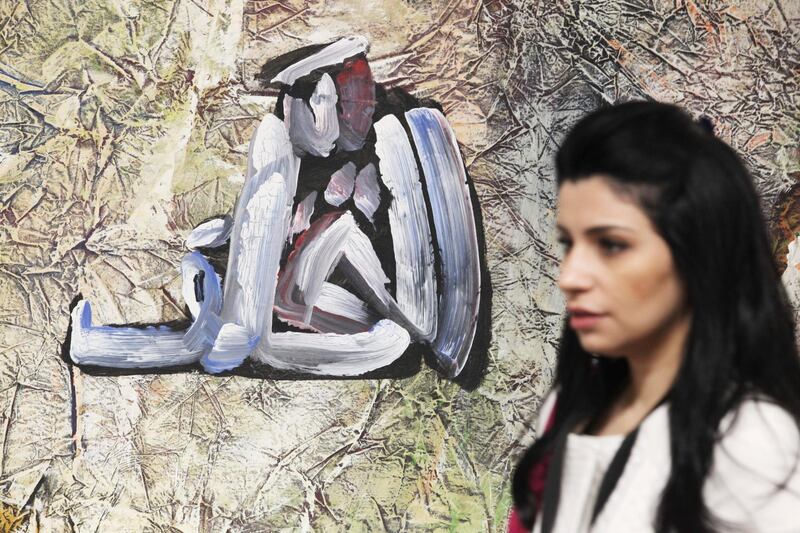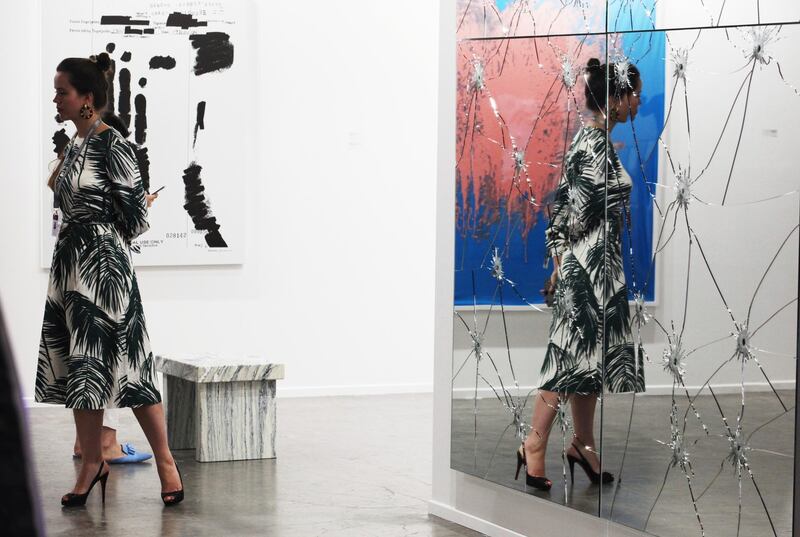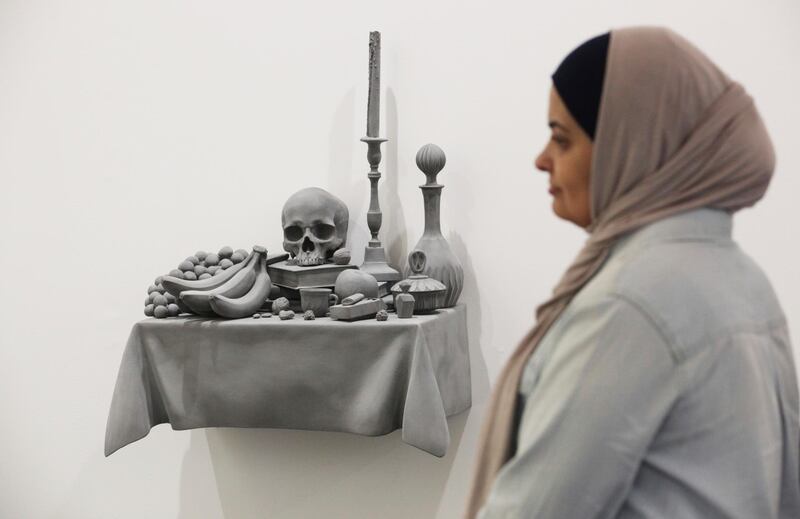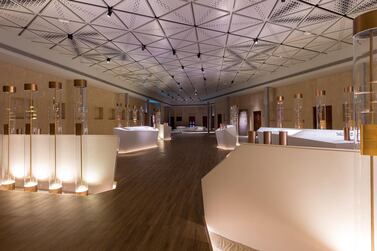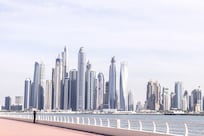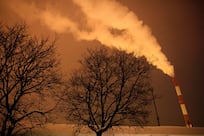Art Dubai at Madinat Jumeirah is more than a fair: it's a congregation point for artists and art professionals from all across the globe. Art Dubai realised the benefits of its geographical position early on and ran with it, packing out its programme with events, performances and educational workshops.
This year the fair, which runs from today until Saturday, extends its emphasis on global reach further, with a dedicated focus on the Global South, including the Middle East, Africa, Central and South Asia and Latin America), with a specific focus on Latin America.
The galleries
There's a slight reorganisation of layout: the modern and contemporary galleries will be together in the main spaces of Madinat Jumeirah, as will Residents and a new section, Bawwaba, Arabic gateway.
Bawwaba comprises 10 galleries drawn from the Global South. Put together by the French-Cameroonian curator Elise Atangana, it includes Jhaveri Contemporary from Mumbai, Gypsum Gallery from Cairo and Guzo Art Projects from Addis Ababa.
Residents, the popular (and more affordable) section of art made in the UAE, returns this year curated by Munira Al Sayegh from Abu Dhabi and Fernanda Brenner who directs the art space Pivo in Sao Paulo. The pair selected 12 artists from Latin America who worked at UAE residency spaces – Bait 15, Dubai Design District, Tashkeel and Warehouse421 – for around a month before the fair, and who will show the fruits of their labour.
The non-gallery programming:
The site below the Mina A'Salam hotel that you have to take a higgledy-piggledy route to get to, will be devoted to the fair's non-gallery programming: UAE Now, for which Al Sayegh has curated a group of young Arab art collectives (for more on this see page 26), and a group exhibition by artists on the Campus Art Dubai education programme: Dima Srouji, Augustine Paredes, Jumairy and Mohamed Khalid.
The commissions:
Then there's the commissioned installations. The Brazilian collective Opavivara! bring their native country's most famous entity – its beaches – to a city on the water. Battle of the beaches! 'Solaroca' re-creates a Brazilian version on Madinat Jumeirah's Fort Island in a fantasy-meets-fantasy scenario where a traditional Brazilian oca house provides shade for visitors.
Saudi Arabian artist Danieh Al Saleh has won the second Ithra Art Prize and you can see her commissioned work on language and meaning in the main part of the fair. And the longtime fair sponsor, Swiss private bank Julius Baer, presents for the first time a specially made artwork: a piece by French-Moroccan artist Chourouk Hriech who has drawn a black-and-white narrative of the growth of the bank itself.
All the above are available to see every day, from today until Saturday. By that point the gallerists' faces will be drooping with exhaustion from guarding their artworks from rowdy children (who brings children to a fair? Me. Also, don't do it), craning their necks for the odd collector who might have slipped past in the preview days, and explaining their booths to interested members of the public. Though there is a perception that contemporary artworks (and its gallerists) are intimidating, ultimately, the people on the booths just want to support their artists; don't be shy to ask about the work you see.
The talks and lectures
As always, the fair will include performances, lectures and discussions. This year Portuguese art space Kunsthalle Lissabon curates two live events drawing on dance and music. Marlon Griffith from Trinidad and Tobago, creates a version of his A Walk into the Night, in which 150 performers from the Filipino community in Dubai will wend their way through the fair, in an evocation of Trinidadian carnivals and West African shadow puppetry. The performance will take place on Friday at 7.30pm, throughout the fair and at Fort Island.
Hong Kong artist Samson Young updates a traditional Chinese lion dance, trading its percussive element for a soundtrack drawn from the sounds of the bodies themselves as they perform and listen to it. Muted Situation #2: Muted Lion Dance is on daily from 5pm to 5.15pm in the Madinat Jumeirah's Johara Foyer.
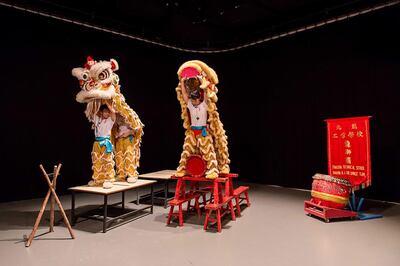
Global Art Forum looks at education, in a two-day programme on today and tomorrow, curated by Shumon Basar, its long-time commissioner, alongside Victoria Camblin, the former editor of Art Papers in Atlanta, Georgia, and Fawz Kabra, a curator and writer who lives in Brooklyn.
Don't miss researcher Barbara Vanderlinden's lecture on scientific experimentation in the art world today at 4.55pm, or the discussion between Antonia Carver, director of Art Jameel, Elvira Dyangani Ose, the new director of London's Showroom Gallery, and Sohrab Mohebbi, curator of the SculptureCentre in New York, on why education is so important to the art establishment today at 6.30pm. And on Thursday at 7pm, British artist Cecile B Evans and technology thinker Christine Nasserghodsi get together with Shumon Basar to debate machine learning and what we mean by education on the part of digital assistants such as Siri and Alexa, and the algorithms that suggest books to us.
The Modern Symposium, which commissions lectures around the topic of Arab modernism, has grown more substantial and rigorous each year. The event this year, taking place at the Dubai Talks space at Mina A'Salam, focuses on the importance of the city itself as forming a backdrop to artistic scenes, with developments in four cities elaborated by experts in their fields.
Nada Shabout looks at Baghdad in the mid-20th century, in that extraordinary period of artistic innovation that was shut down by political events; Pakistani scholar Iftikhar Dadi examines the art scene in Lahore; and Dyangani Ose turns to Dakar, where she co-curated the Dak'Art biennial in 2017. Catherine David, the Documenta X curator and co-curator of the first Hassan Sharif show in Abu Dhabi, at the Cultural Foundation in 2011, interrogates Beirut.
The music
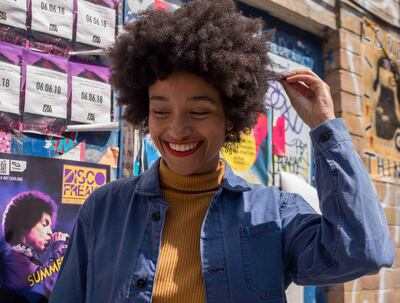
Finally, close your eyes. It doesn't get much fanfare, but Art Dubai also hosts an after-dark music programme, this year courtesy of NTS Radio from Hackney in London, set up by Femi Adeyemi in 2011. Looking at music from the Middle East, Africa and the Americas, NTS curates a programme by DJ Alexander Nut with producer, radio host and DJ Zakia Sewell and musician Nabihah Iqgal (formerly known as Throwing Shade) with broadcaster and DJ Zezi Ifore. Alserkal Avenue, Sikka, the Jameel Arts Centre and other UAE institutions all have special programming for the art season as well.
